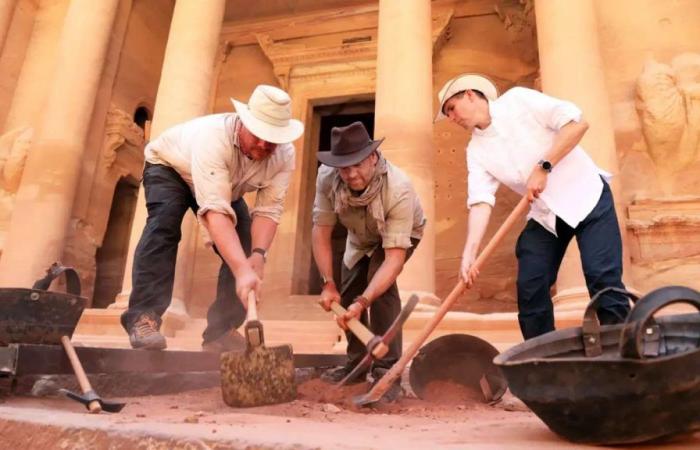In the heart of Jordan, the “pink city” of Petra continues to be the subject of keen interest among archaeologists. This monument, classified as one of the new wonders of the world since 2000, was recently the scene of successful excavations. CNN revealed on October 12 that a tomb had been dug under the majestic cut stone facade, concealing twelve skeletons as well as ancient artifacts. According to initial dating, these objects are at least two millennia old. A discovery confirming the theories of specialists: all of Petra’s secrets have not yet been exposed.
The culmination of twenty years of research
The famous facade of Petra was the highlight of the third part ofIndiana Jones and his quest for the Grail. In front of the portesportes of this tomb, called Khazneh, not a biblical artifact, but a notable success on which archaeologists have been working since 2003. Twenty-one years ago, excavations took place at the level of the left facade of the Khazneh. Rarely, archaeologists found two burial pits, but containing only scattered fragments of bones and a few artifacts. They thus hoped to detect in the process other burialsburialsbut ultimately without immediate success.
Various techniques are used before arriving at the results of the directed excavations in August. The previous year, in 2023, researchers were carrying out geological and topographical studies in the area, with support from theAmerican Center of Research (Achor). In recent months, Acor has been carrying out an analysis of Petra’s underground passages using radars dedicated to capturing electromagnetic waves. Ground-penetrating radars are non-technical means invasiveinvasive to collect data on stratastrata lower floors. The objective is to detect the potential presence of elements worthy of interest in order to tighten and target the excavation process.
An ancient city shrouded in mysteries
The twelve skeletons found in front of the mursmurs of Petra have not yet been identified, but they represent the largest harvest of human remains recovered within the walls of the ancient site. The artifacts locked in the tomb for two thousand years are particularly well preserved.
As an echo of the fictional adventures of Professor Jones, one of the ceramicsceramics exhumed is in the form of a chalicechalice somewhat rudimentary. It is likely that some of the objects that were buried were destroyed, due to the harsh climatic conditions in Jordan, including floodsfloods. Recent construction sites in Petra augur further advances in determining the origin of the monument. Its initial usefulness raises many questions among historianshistorians. If the region is known to have been inhabited since the 7the millennium BC, Petra is much more recent.
The first stones seem to have been laid in Iis century AD, but we have to wait until the 4the century for Petra to take the characteristic form we know today. The city was built by the Nabatean peoples, whose origins date back to the Babylonian and Aramean migrations, settling in this province of Jordan during Antiquity. It also became the capital of the Nabataean kingdom around the 2nde century. The city changed its allegiance under the domination of the Romans, then the Christians and finally the Muslims, before being gradually abandoned during the Middle Ages. Academics suggest that a large part of the site served as a mausoleum from the 4th centurye century.
The study of the skeletons should offer more details on the individuals who walked the ancient city, pending hypothetical new excavations under the Jordanian sun.






